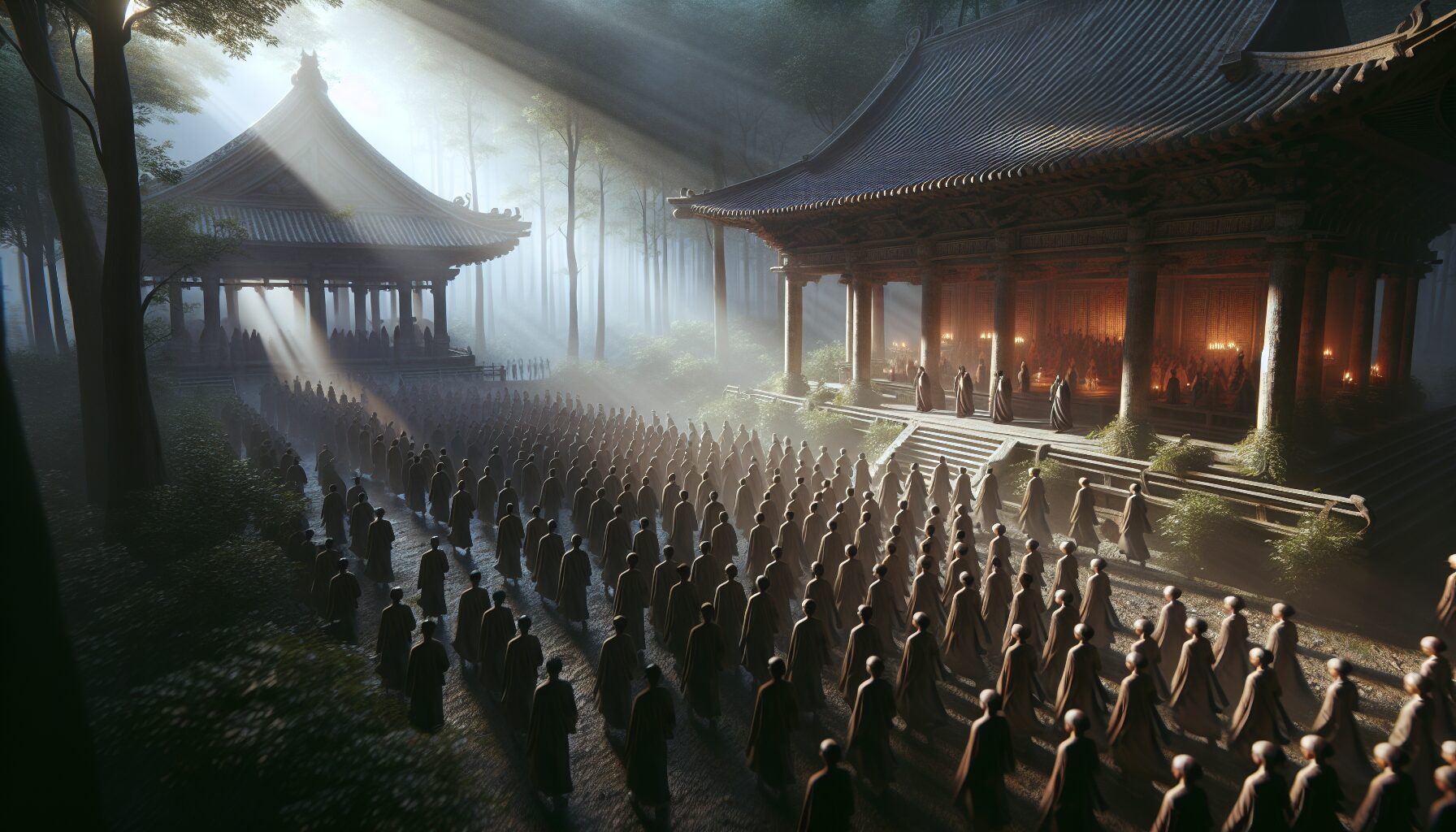Silent Processions: Observing Hidden Ceremonies
Discover the enigmatic world of silent processions, where cultural traditions meet spiritual expressions in a cacophony of quietude.
Introduction
Silent processions are enigmatic cultural phenomena that weave together the threads of tradition, spirituality, and community. These understated ceremonies, conducted in hushed reverence, are steeped in symbolism and resonate with those who practice them. While they vary greatly across different cultures and regions, silent processions share a common ethos of solemn observance.
The Meaning Behind the Silence
The silence that envelops these processions is not merely an absence of sound; it is a powerful presence in itself. As author Ursula K. Le Guin famously wrote,
“The only thing that makes life possible is permanent, intolerable uncertainty; not knowing what comes next.”
This uncertainty and openness to external forces defines the silent procession, allowing participants to reflect inwardly while engaging with their environment in a profound manner.
The silence allows for introspection, fostering a meditative state that serves both personal and communal purposes.
Regional Variations and Practices
- Northern Europe: In regions such as Scandinavia, silent processions often coincide with seasonal changes or solstice celebrations, venerating natural cycles.
- South America: Indigenous tribes incorporate silent walks during certain rites of passage or healing ceremonies, allowing individuals to attune themselves to spiritual energies.
- Asia: In many parts of Asia, silent processions are linked to Buddhist practices, where monks engage in walking meditation, embodying mindfulness and peace.
The Role of Symbols and Rituals
Symbols play a crucial role in silent processions, serving as touchstones for the community’s shared values and beliefs. Whether it’s the Lotus Flower in Buddhist traditions or the Lion Dance in some East Asian cultures, each element speaks volumes despite the absence of verbal expression. These symbols often carry a dual meaning—both historic and personal, providing layers of depth to the ceremony.
An Expression of Collective Identity
According to sociologist Emile Durkheim,
“A society is not a mere sum of individuals; it is the system formed by their association, representing a specific reality which has its own characteristics.”
Silent processions epitomize this principle by acting as a manifest expression of a community’s collective identity. Each step taken in unison reinforces the bonds among participants, creating a tapestry of shared purpose and trust.
The Impact of Modernity
In an era of increasing digital noise and 24/7 connectivity, silent processions offer an antidote to modern life’s chaos. However, they are not immune to contemporary influences. Many communities are now integrating digital elements into their silent ceremonies, using technology to amplify the experiences—like projecting symbolic images onto nearby buildings or creating virtual spaces for remote participation.
Despite these adaptations, the core principles remain unaltered—silence, presence, and unity.
The Challenge of Observation
For outsiders wishing to observe these hidden ceremonies, understanding the cultural context is vital. It is essential to approach with respect, humility, and an open mind. Observers must remember that they are guests in a sacred space and should act accordingly, often keeping to the periphery to allow participants to engage fully in their rituals.
Conclusion
Silent processions are a poignant reminder of the enduring power of tradition and community in an ever-shifting world. By embracing the quiet, these ceremonies not only preserve cultural heritage but also promote a global understanding of the multifaceted nature of human expression. As we look toward the future, the silent procession remains an eloquent testament to the beauty of shared silence.

Comments